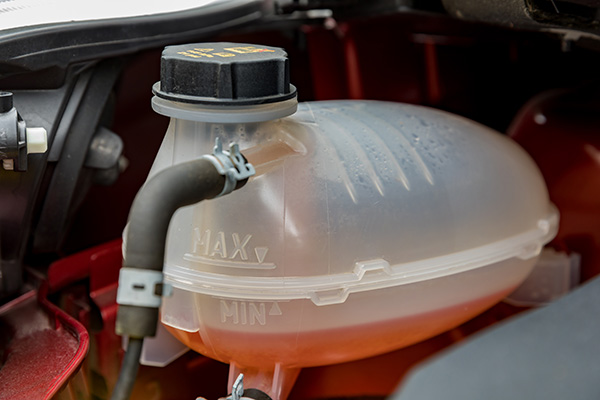
Seeing an empty coolant reservoir can be concerning, especially if you’re unsure why it’s happening. Your car’s cooling system keeps your engine at the right temperature, and coolant is required in that process. But when you notice that the coolant reservoir is empty, it raises questions. Where did the coolant go? Is there a leak, or is something else causing the problem? Let’s explore some of the common reasons for an empty coolant reservoir and what you can do to address the issue.
Evaporation or Leakage
One of the most common causes of a low or empty coolant reservoir is leakage. The coolant system is designed to be a closed system, meaning that under normal circumstances, the coolant should not escape. If the coolant level is dropping, you’re likely dealing with some sort of leak. But where could it be coming from?
The most obvious answer is external leaks. This could occur from damaged hoses, a loose radiator cap, or cracks in the radiator itself. Coolant leaks can sometimes be difficult to spot since the liquid may evaporate when it hits the hot engine or parts of the car.
If you don’t see visible signs of leakage but still notice the coolant disappearing, it could be due to an internal problem, such as a leaking head gasket. This allows coolant to escape into the engine, where it can burn off or mix with the engine oil.
Faulty Radiator Cap
The radiator cap might seem like a small part of your car’s engine, but it plays an important role in maintaining the correct pressure in your cooling system. A malfunctioning or loose radiator cap can cause coolant to escape and evaporate without leaving a trace, leading to an empty reservoir.
When the radiator cap isn’t sealed correctly, it can allow coolant to boil away and reduce the overall fluid levels in the system. Replacing a damaged or worn-out radiator cap is a simple fix but can prevent bigger issues down the road.
Water Pump Problems
The water pump is another key component of your car’s cooling system. It ensures that the coolant is circulating properly through the engine and radiator. A failing water pump can result in coolant loss and may even cause your engine to overheat.
If the water pump has a bad seal, it could allow coolant to leak out, leading to an empty reservoir. In some cases, this might also be accompanied by a visible puddle of coolant under your car or unusual sounds from the engine. If you suspect an issue with the water pump, it’s important to get it checked out quickly, as a complete failure can lead to more severe engine damage.
Internal Engine Problems
Another reason for an empty coolant reservoir could be internal engine problems like a cracked engine block or a blown head gasket. When these issues occur, coolant can mix with engine oil or enter the combustion chambers, where it is burned off. This not only leads to coolant loss but can also cause major damage to your engine if left unaddressed.
Signs of these internal problems often include white smoke coming from the exhaust, milky or discolored engine oil, and frequent overheating. If you notice any of these symptoms, it’s time to take your vehicle in for a thorough inspection, as these issues can quickly escalate.
Coolant System Maintenance
Preventative maintenance can go a long way in avoiding an empty coolant reservoir. Regularly checking your coolant levels and keeping an eye on the temperature gauge can help you catch issues early. If you notice your coolant levels dropping frequently, that’s your car’s way of telling you there’s a problem.
Always be sure to use the correct type of coolant for your vehicle, as different cars require specific formulas. Mixing different types of coolant can lead to corrosion and damage to your car’s cooling system.
Got coolant issues? Robbie’s At Your Service specializes in maintenance and repairs that keep your car in top shape. Schedule your appointment today to ensure your cooling system is in perfect working order!